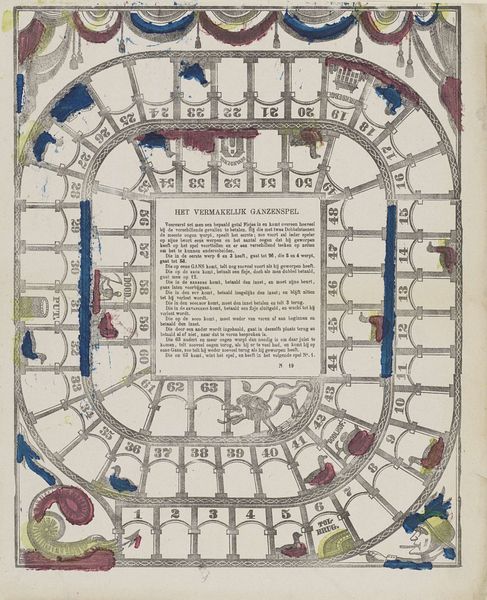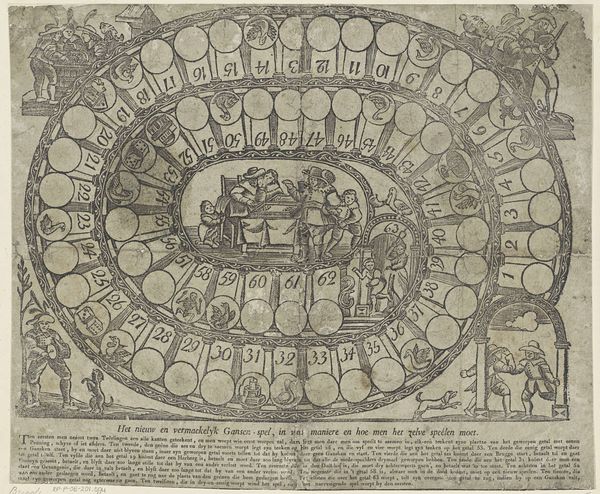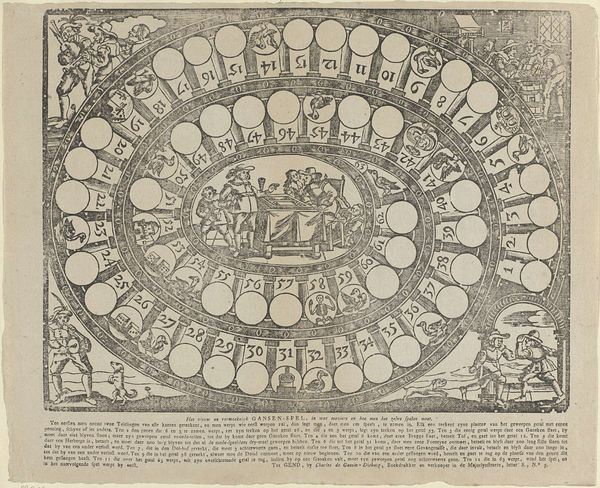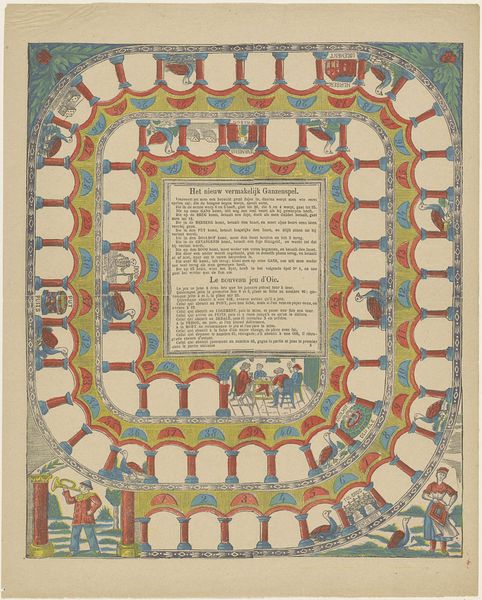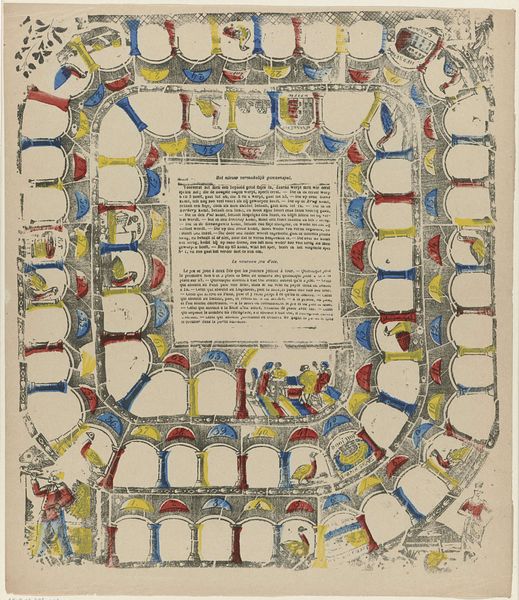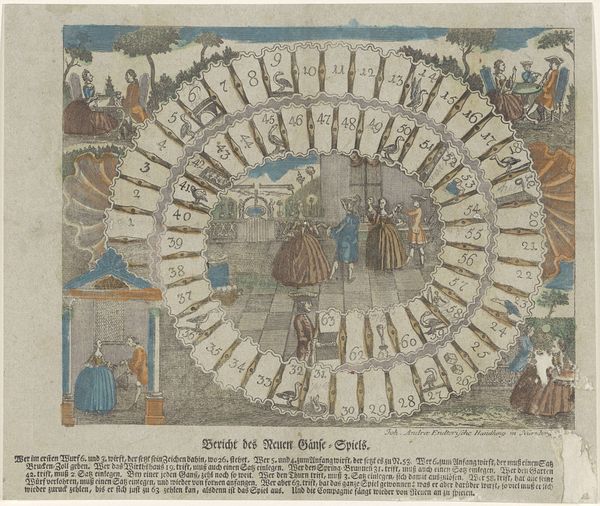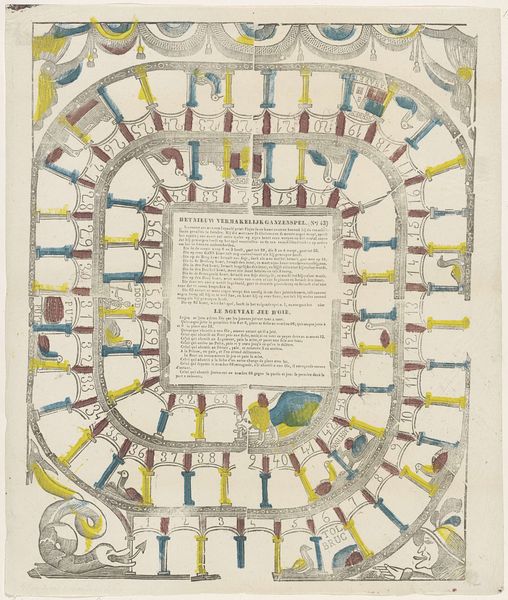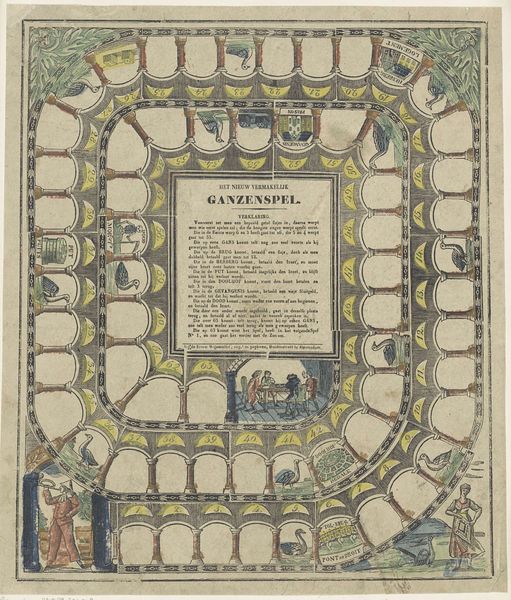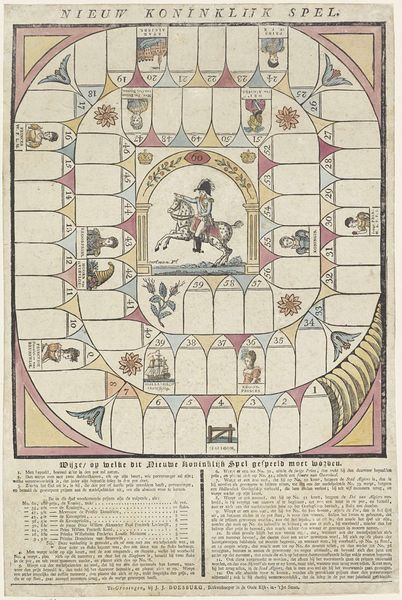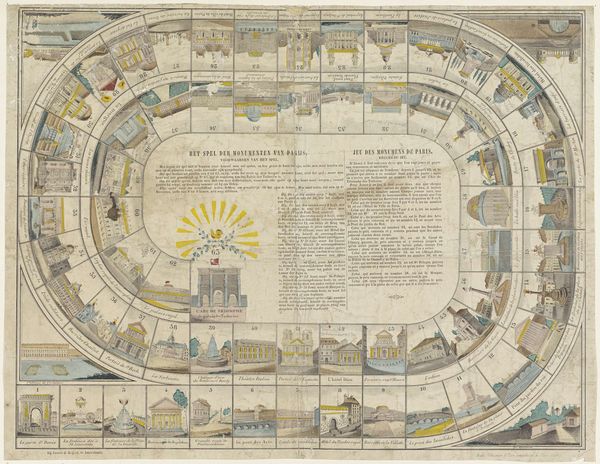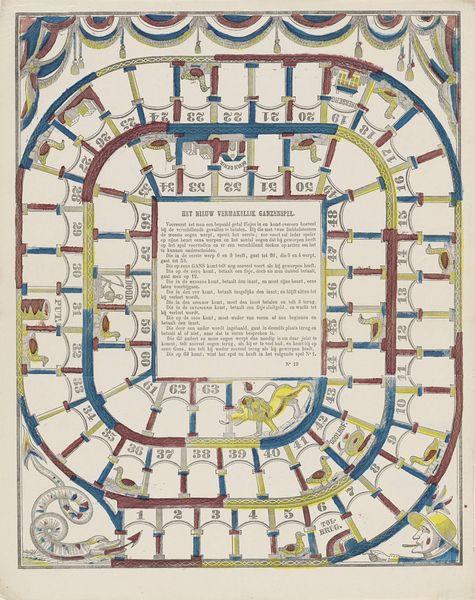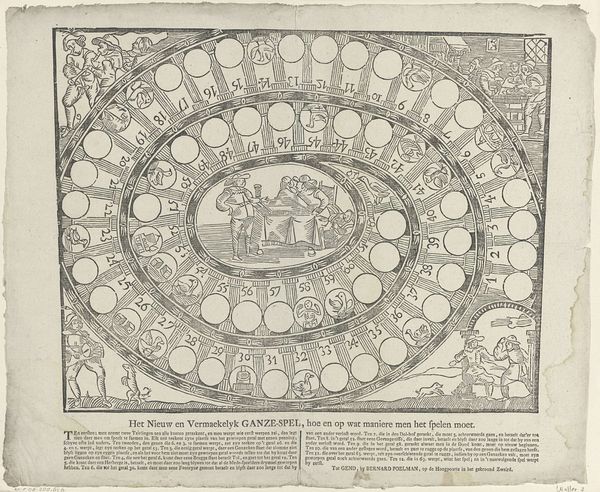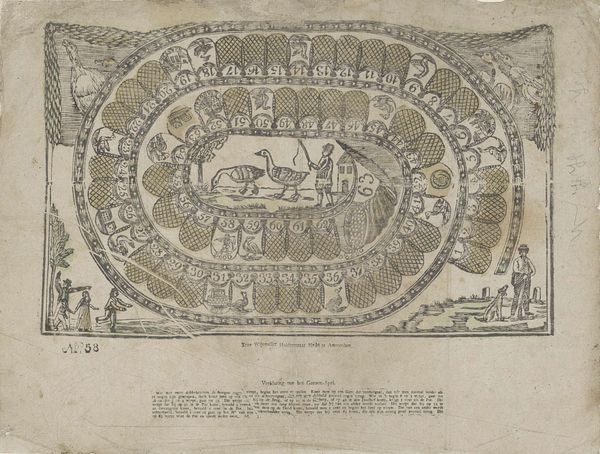
Het nieuw en vermakelyk ganzen-spel, op welke wyze en hoe men het zelve spelen moet 1800 - 1833
0:00
0:00
graphic-art, print, engraving
#
graphic-art
#
dutch-golden-age
# print
#
linocut print
#
intricate pattern
#
pattern repetition
#
genre-painting
#
engraving
Dimensions: height 387 mm, width 460 mm
Copyright: Rijks Museum: Open Domain
This is ‘The new and entertaining Game of Goose, showing how to play it,’ made by Philippus Jacobus Brepols in the late 18th or early 19th century. It's a hand-colored etching on paper, a relatively democratic medium for the time. Consider the role of printmaking in the 1700s and 1800s. Unlike painting or sculpture, prints could be made in multiples. This meant that games like this one could circulate widely, bringing entertainment—and perhaps a bit of moral instruction too—to a broad audience. Look closely, and you'll see that each space on the spiral board is numbered and illustrated. Landing on certain spaces has consequences – advancing you forward, or setting you back. This etching wasn't just a decorative object; it was a template for social interaction, meant to be used and enjoyed by people of all ages. So, it offers insight into everyday life during the period it was made. By focusing on its materials, production, and context, we can understand the Game of Goose as more than just a pretty picture. It's a window into the world of leisure and labor, reminding us that even games have a history.
Comments
No comments
Be the first to comment and join the conversation on the ultimate creative platform.

